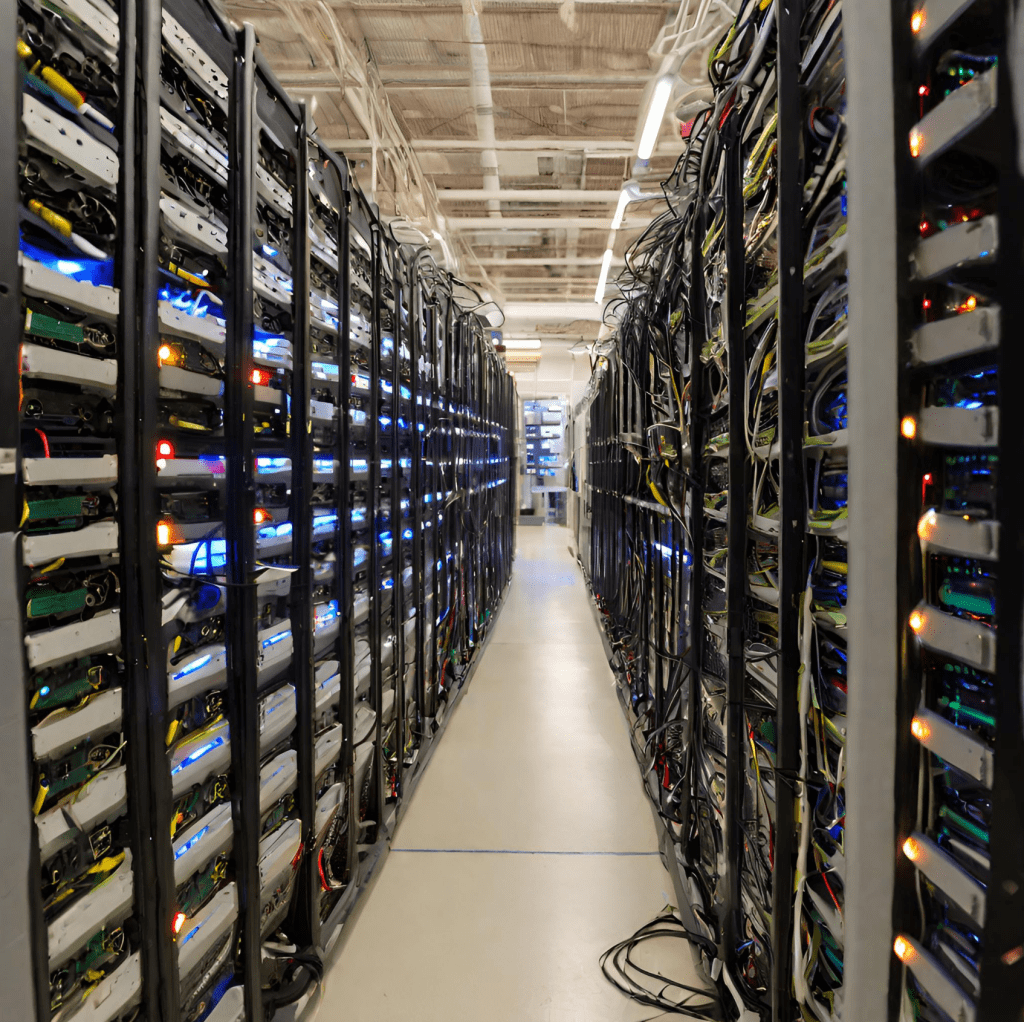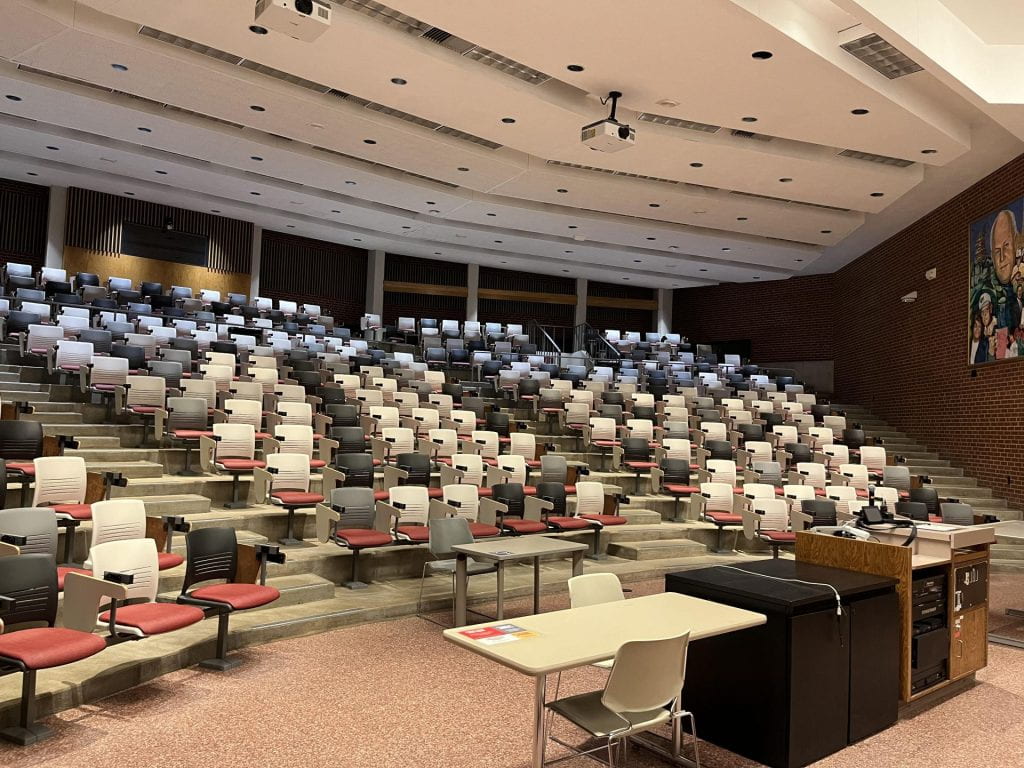How To Drive in the Snow
Go slow, be careful. Getting somewhere late is better than not getting there at all.

By Noah Williamson
“Typically, front wheel drive and rear wheel drive are going to be your go to” says Will Geisler, when asked what cars handle best in the snow. Will is the resident autocross enjoyer and car enthusiast among his friend group and has driven a Crown Vic for the past few years. He has gained a lot of driving experience, especially in the snow, where the Vic is notoriously bad.
The first thing any driver should do before going out in the snow is to make sure your car is in working order. “If you’re worried about winter driving, it always pays to get your car inspected by a mechanic. or something like that, make sure your anti-lock brake system is functioning, make sure you have enough brake, and make sure everything is working good. You’re not going to have your wheel fall off while you’re in the snow and no one can stop behind you.” Any problems that might otherwise be passable during the rest of the year are amplified in the winter, where the stakes are higher.
Increase your following distance, and decrease your speed. Will notes, “Common errors are really not giving yourself enough braking time, sliding through intersections. They’ll be like ‘oh, I’m going to stop like normal.’” Overkill is the right level of “kill” for driving in the snow, and while it might be painful for some to do everything incredibly slowly, the biggest delay will always be when you hit something or someone else.
Proper maintenance and driving cautiously keep everyone safe. However, even with the best winter driving, accidents and misfortunes can’t be entirely sidestepped. Be prepared by keeping an emergency kit in the event of an incident. “Get yourself a blanket, some water, maybe some protein bars or something.” Will continues on to explain the importance of being prepared when he had to get his car towed out one time. “Always bring winter gear. Even if you don’t think you need it and your car is warm because when you get in a crash, I was standing there in frostbite conditions… I was wearing what I’m wearing now [a sweater and jeans]… ” Will continues, “A tow rope is like $20, that’s a really good investment. I wish I would have had that this winter.”
PRO Column – What We Should Think About A.I.

Generative A.I. was at one point fairly under the radar. Neural networks and the related fields as we know them today have been active since their inception in the 1970s, but it wasn’t until last year with the release of ChatGPT that the world really turned its attention to the rising generation of A.I. advancement and what it could mean for the future and progress of humanity. The ability of ChatGPT far surpassed everything that came before it, and was on display to anyone who could hold a phone in their hands or a computer on their lap. It became clear in no other way before that change was on the horizon. But change for the better, or for the worse?
To answer this question, it helps to examine some of the effects that have already been seen. One New York Times article details how generative A.I. is being used to design efficient and durable concrete blocks for road and building construction. One professor, Dr. Amir Alavi, quoted in the article says, “These are structures [generated by A.I.], with the tools that we have, that save materials, save costs, save everything.” While generally untested, the initial results are incredibly promising, and the benefits are astounding to say the least.
It is also worth noting that many of the largest benefits of A.I. have yet to be seen. According to another New York Times article about a study done by the McKinsey Global Institute, generative A.I. has the potential to add $4.4 trillion to the world economy through increased efficiency and output across many areas. This study reflects the fact A.I. has the undoubtable ability to automate many kinds of work that weren’t able to be before.
Clearly, generative A.I. technology has a diverse and far reaching array of benefits. Despite this, some call for a “pause” on A.I. development, fearing that the rate of development is too fast. In Gabriel Huang’s The Case for an A.I. Pause, featured in the New York Times Student Editorial Contest, he argues that in order to stymie the negative effects and uncertainties of continued A.I. development, companies in power should “hit pause.” Unfortunately, this approach suffers from remarkable vagueness and infeasibility. While maybe sound reasoning in general terms, attempting to describe in detail what such an A.I. pause would entail on a specific developmental level is something that has not happened yet, and quite frankly, it’s far easier said than done.
Moreover, the reality of the situation is that the stakes of continued A.I. development are too high for anyone to take a ban seriously. Generative A.I. has the ability to change the world, and the implications of that cannot be ignored. If nothing else, A.I. development must continue for the sake of security. Regardless of what governing agencies would like to believe, somewhere in the world A.I. development will continue regardless of the situation, and just like the nuclear arms race of the 50s and 60s, the “A.I. Arms Race” will continue whether our country, or any country, decides not to be a part of it. That’s not to say that regulation doesn’t have an important role to play, but regulation of development is a far different proposition than no development at all.
Stepping back is no longer an option, and perhaps never was. The real question is, will we step forward with confidence and rise to the challenges that will come? Or will we falter and stumble in ignorance? The road ahead is full of uncertainty, but one thing in my mind remains clear. We have to embrace progress, not shy away from it.
Works Cited
Edmonds, Colbi. “New Tool for Building and Fixing Roads and Bridges: Artificial Intelligence.” The New York Times, 19 November 2023.
Huang, Gabriel. “The Case for an A.I. Pause.” The New York Times, 22 June 2023.
Isaac, Mike, and Tally Abecassis. “One Year of ChatGPT: How A.I. Changed Silicon Valley Forever.” The New York Times, 5 December 2023.
Lu, Yiwen. “Generative A.I. Can Add $4.4 Trillion in Value to Global Economy, Study Says.” The New York Times, 14 June 2023.
Nielsen, Michael A. Neural Networks and Deep Learning. Determination Press, 2015.
A Meaningful Personal Experience
There have been a few various times over the past year where a lot was on the line. I had one shot at accomplishing something and if I failed, I more often than not wouldn’t get another chance. Making the full team roster this year for FRC Team Neutrino was one such situation. Rosters are announced right before school starts, which means that summer participation and engagement are crucial to being selected.
Last summer, I let Neutrino slide a bit because I was so busy with other things, and I paid the price for my failure to balance everything properly by not making the team. I was still able to be engaged over the previous school year due to fortunate circumstances, but I knew that this same opportunity would probably not be available again, meaning that if I didn’t make the team this time, I would have to be done. My high school journey with FRC would be over.
As my junior year was wrapping up, I turned my attention to the summer that was starting and all of the various things that I needed to do, including Neutrino. Even though I was eventually able to get my calendar in order unlike the previous year, at times with no small effort, I was unsure whether any of what I was doing would amount to anything. I was certainly doing everything that I could and everything that I expected of myself, but the threshold of when enough is truly enough was invisible to me. I realized early on that there was a very real possibility that no matter what I did, I wouldn’t be able to succeed to the level that I had set out for myself.
Slowly but surely, the summer continued. For the most part schedule wise, things worked out. I was surprised by this result. I was able to participate and lead the activities that I was expected to without much of a hitch. Soon, July came, and then August. By the end of the summer, I had managed to accomplish pretty much everything that I went into the summer hoping I would be able to do and then some as well. There ended up being a fairly involved project that I spearheaded that turned out much better than I ever could have hoped for.
Despite all of this, I knew that there still was a chance that I wouldn’t make the team. I realized however, that I could accept that outcome. I contributed everything that I could up to that point, and I learned so much and had a lot of fun as a result. Even if I didn’t make the team, the time and effort that was spent on my part would be far from wasted. I would still be able to benefit from the experience because it offered things beyond just the ability to make the team that I took advantage of to the highest degree.
Team rosters were announced August 15th this year, and remarkably, I made the team. I was delighted that my journey in FRC wouldn’t be over just yet. This experience served as a testament and powerful reminder that extrinsic success or failure doesn’t necessarily define whether any situation was well worth the effort. What matters is the learning and growth that happened because of it. It’s nice to succeed. It really is, and I’ve never gone into a situation hoping for anything else, but I am imperfect, and that is the way that life must be lived.
What High School Is Like In 2023

For about a third of the school week I’m not actually at Ames High. Between Calc 2 and Computer Science 228 I spend a fair amount of my time at ISU these days. Because of this, my perspective on what high school is like is probably somewhat different than most. Personally, I struggle to see the problems and worries that plague the news day in and day out. High school certainly isn’t easy. In fact, for me it’s been quite difficult. But, I’m maybe a bit surprised to see that it’s difficult for none of the reasons that the media seems to think it is.

High school is hard because like really any stage of life, there’s a countless number of things to do, but a finite and very countable number of hours in the day, and a calendar for those days that doesn’t last forever. I want to be able to do all the things that I have a desire to engage in, but I quite simply can’t, and being able to balance and succeed in all of the various things that remain is a constant job and worry with seemingly no end in sight. That is why high school is hard in my eyes, with this struggle being the defining essence of what high school has been for me.
Ultimately, that’s really how I want it to be. Many people don’t seem to have an experience like this, or even have a desire for it. I can certainly understand that, but personally, I’ve found that going that route isn’t meaningful enough for me. The difficulty is what gives this experience meaning and purpose. I’ve found that real joy and happiness cannot be fully realized without its opposite. As long as I’m able to come out on top one way or another at the end of the day I would always say it was worth it. It would really be what I wanted to do, even if it was painful at times.
Welcome to Noah’s Journalism Blog!
Hello world!
Welcome to your brand new blog at Edublogs!
To get started, simply visit your blog’s dashboard, edit or delete this post and check out all the other options available to you.
Like more help?
We can walk you through step-by-step in our guide to getting started with your blog.
Happy blogging!